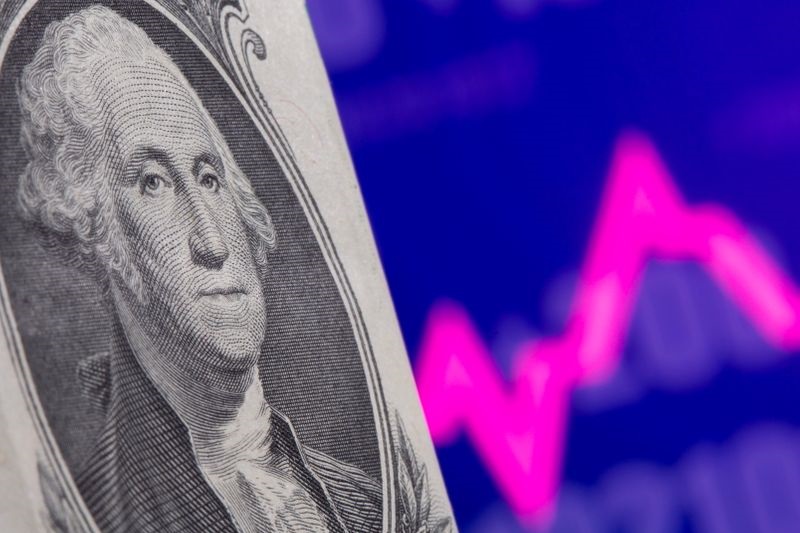Powell’s speech, Nvidia’s chips, Meta deal - what’s moving markets
By Peter Nurse
Investing.com - The U.S. dollar edged higher in early European trade Friday, attempting to recoup some of the previous session’s hefty losses ahead of the release of the widely-watched monthly U.S. employment report.
At 02:50 AM ET (0650 GMT), the Dollar Index, which tracks the greenback against a basket of six other currencies, traded 0.2% higher at 105.785, after slumping 0.7% overnight, the largest fall since July 19.
Friday’s main focus will be the July U.S. jobs report, which will provide clues of how the U.S. economy is faring.
Economists expect nonfarm payrolls to have increased by 250,000 last month, a slowing in growth from the 372,000 jobs in June. That would mark the 19th straight month of payrolls expansion but would be the smallest increase in that span.
Data released on Thursday showed the number of Americans filing new claims for unemployment benefits increased last week, suggesting some softening in the labor market, and the jobs report will be studied carefully for potential confirmation.
The cooling in job growth could ease pressure on the Fed to deliver a third straight interest rate increase of 75 basis points at its next meeting in September.
That said, a number of high-profile Fed officials have taken a hawkish tone in recent days, indicating that the central bank is still firmly focused on taming inflation and further interest rate hikes are coming.
EUR/USD fell 0.1% to 1.0230, handing back some of the previous session’s 0.8% overnight gains, and more euro losses look likely as concerns about an energy crisis remain.
“We have changed our base scenario for the eurozone economy, which now includes a recession in the coming quarters,” said analysts at ABN Amro, in a note. “A number of factors have contributed to the changes in our scenario. Most importantly, after the annual maintenance to the Nord Steam 1 pipeline in July, gas flows from Russia clearly have not returned to the levels that would prevent an energy crisis in the Eurozone.”
GBP/USD fell 0.1% to 1.2143, after house prices in Britain fell for the first time in more than a year in July when they edged down by 0.1% from June, figures from mortgage lender Halifax showed on Friday, as rising interest rates and soaring inflation finally took their toll.
The Bank of England raised borrowing costs by 50 basis points on Thursday, to 1.75%, its highest level since late 2008, as it attempts to subdue inflation running at a 40-year high. The bank also warned about a long recession ahead in Britain.
USD/JPY rose 0.3% to 133.19, AUD/USD was largely flat at 0.6967, while USD/CAD edged higher to 1.2866, with the Canadian dollar suffering from the recent drop in oil prices.
